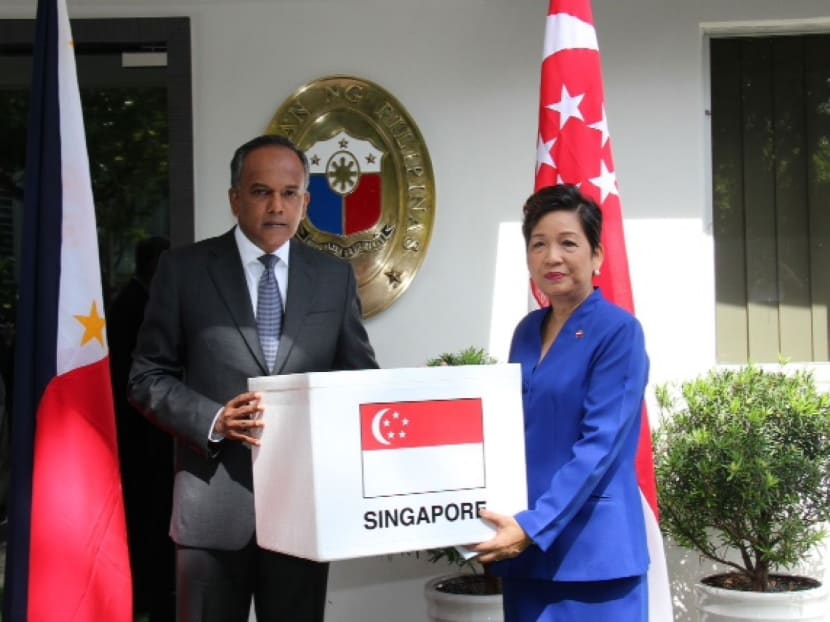Type of help, not size of monetary donation, key to relief effort: Shanmugam
SINGAPORE — Helping disaster-stricken countries involves providing them with what is most needed to save lives, which may not necessarily be measured by the amount of monetary donations.

Minister for Foreign Affairs K Shanmugam and Philippines Ambassador Minda Cruz at the presentation of Singapore's additional contribution in kind to the Philippines for Typhoon Haiyan. Photo: Ministry of Foreign Affairs
SINGAPORE — Helping disaster-stricken countries involves providing them with what is most needed to save lives, which may not necessarily be measured by the amount of monetary donations.
Law and Foreign Affairs Minister K Shanmugam made this point yesterday after he presented S$42,000 worth of supplies — S$30,000 in medical supplies and 3,500 bags of drinking water worth S$12,000 — to Philippine Ambassador to Singapore Minda Cruz.
The Singapore Government last week had also contributed S$120,000 worth of relief supplies, such as tents and blankets, on top of an initial S$200,000 cash donation to kickstart relief efforts.
Asked by reporters about online criticism from some Singaporeans that the Government’s initial cash donation of S$200,000 was too little, Mr Shanmugam said the amount was seed money to kickstart relief efforts.
“I think you’ve also got to look at it side by side with all the other help, I think all those are also important,” he said, adding that the Republic of Singapore Air Force had sent two C-130 military transport planes to the Philippines to help in relief and rescue efforts in the immediate aftermath of the typhoon, which ravaged towns and tore through hundreds of thousands of homes.
“We went to the Philippines and asked what is it they will need, because money is also used to buy other things, so what are those supplies they need so that we can ... send the supplies direct — medical supplies, tents, blankets, clean drinking water. Without it, it can cause a lot of additional stress, diseases and more fatalities,” said Mr Shanmugam.
“So, it’s not a question of what country has given how much, it’s a question of what is needed on the ground and helping in the way that we can,” he added.
In response to a critical commentary published in The Straits Times in 2010 that said Singapore was giving too little to relief efforts after the Haiti earthquake, the Ministry of Foreign Affairs (MFA) had said “the amount or type of humanitarian assistance given by the Singapore Government is not intended to match the scale of a disaster”.
Considerations and priorities also have to come into play, such as the nature of relations with the affected country, and whether the aid Singapore provides can add value, as it has limited resources and cannot respond to every disaster in the same way, said the MFA at the time.
It also said Singapore is not in the league of major donor countries and does not aspire to be one.
Yesterday morning, Ms Cruz thanked Singapore for all the assistance given. “Singapore has been one of the first to come to rescue the Philippines ... and really it helped, in the initial stages, which were the more difficult stages,” she said, adding that more assistance will be needed as the Philippines enters the next stage of rebuilding, which will take a much longer time.






